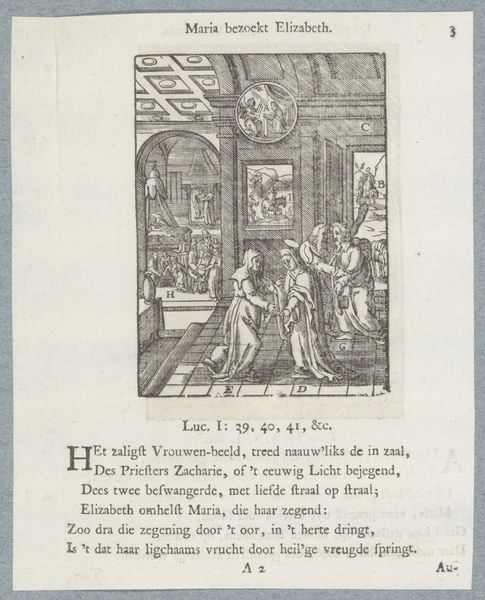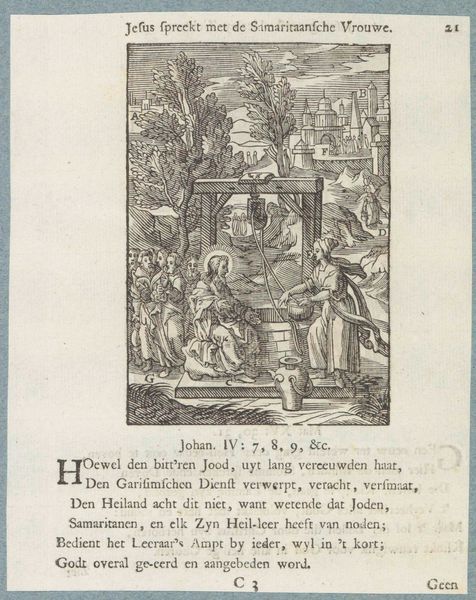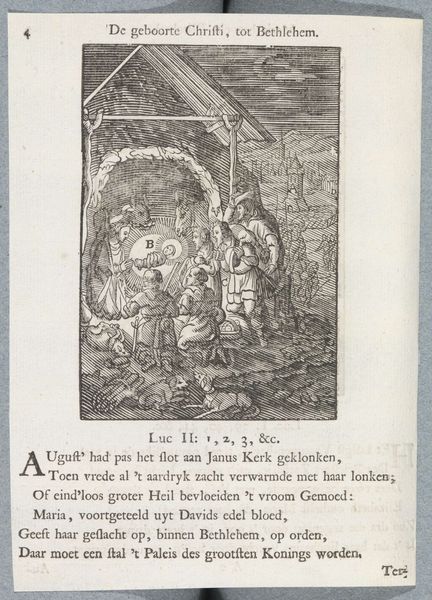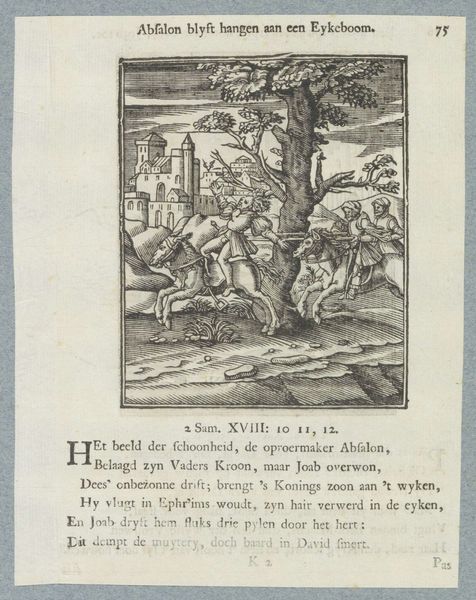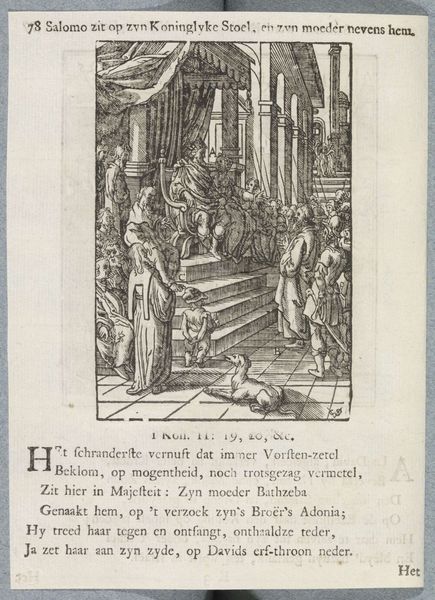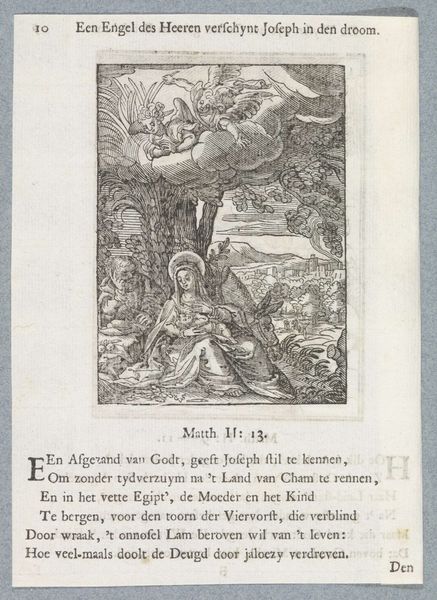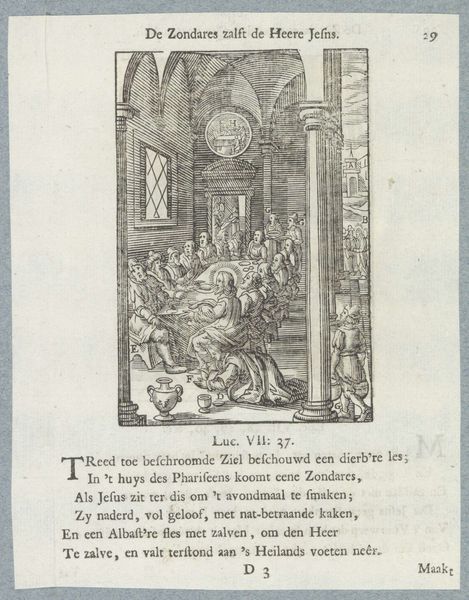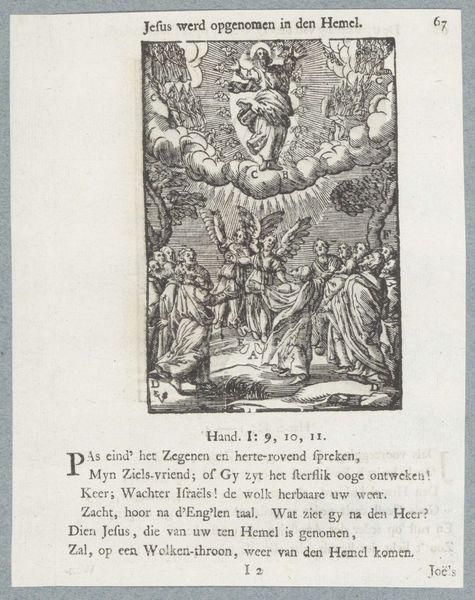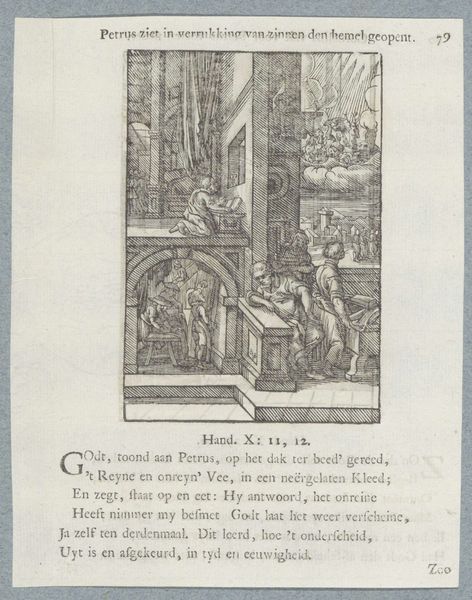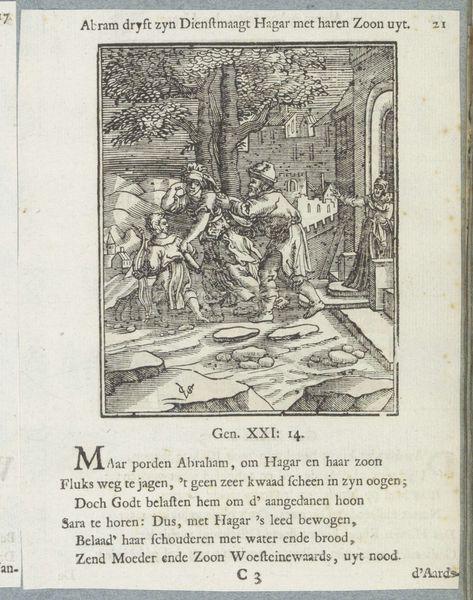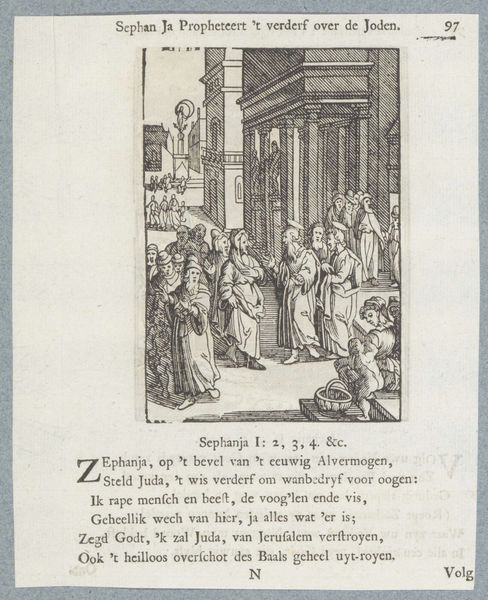
Fillippus wordt door een engel naar een eunuch gestuurd before 1740
0:00
0:00
print, engraving
#
baroque
# print
#
line
#
history-painting
#
engraving
Dimensions: height 110 mm, width 76 mm, height 168 mm, width 135 mm
Copyright: Rijks Museum: Open Domain
This engraving by Christoffel van Sichem II, made sometime between the late 16th and mid-17th century, depicts the Annunciation to Mary. It’s interesting to consider how the visual codes and cultural references in the image shape its meaning. Made in the Netherlands, this piece reflects the religious and social context of its time. Consider the role of the church and its influence on artistic production. The Dutch Republic was undergoing significant religious and political changes, with Protestantism gaining prominence. This historical context would have influenced the artist and audience. What was the purpose of such images within the Protestant Dutch Republic? Were they for religious instruction or something else? To truly understand this work, we need to delve into the history of religious imagery, and the social and institutional forces that shaped its creation and reception. We can look at contemporary sermons, religious pamphlets, and art criticism to better understand its significance. The meaning of art is contingent on its social and institutional context.
Comments
No comments
Be the first to comment and join the conversation on the ultimate creative platform.
